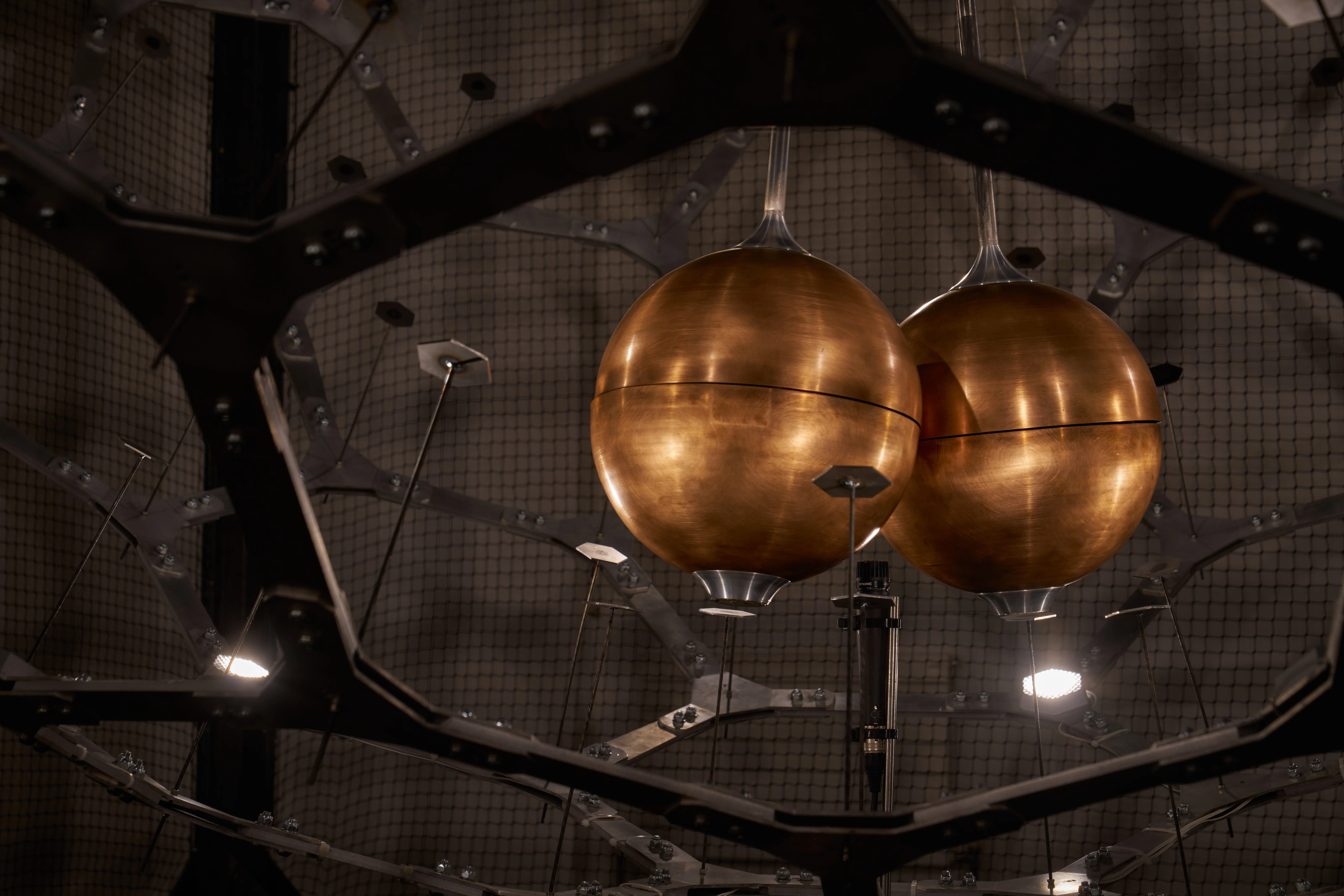A new exhibition opening today will give insights into the hidden world of quantum through immersive artwork and sculptures.

'Quantum Untangled', based at the Science Gallery on King's College London campus, celebrates 100 years since the discovery of quantum theory and reveals how the science could shape future technology. The exhibition draws on research from King's Quantum - a dedicated team of interdisciplinary scientists helping to bring the technology to life.
Through the eyes of artists, scientists, philosophers and poets, Quantum Untangled considers the ways quantum ideas might alter how we understand reality. It invites visitors to travel through quantum's shifting scales: encompassing tiny subatomic particles and the ever-expanding universe, encountering mind-altering perspectives along the way.
Posing questions such as 'what has quantum got to do with me?' to 'how does quantum feel?' and 'will quantum change our world?', the exhibition will shed light on quantum though immersive sculptural installations and interactive artworks, from artists including Robin Baumgarten, Chandrika Narayanan-Mohan, and Conrad Shawcross.
Visitors can also meet the scientists at the forefront of the field. In a series of portraits, videos and audio guides, King's Quantum scientists Dr Mark Mitchison and Dr Eleanor Crane untangle the complexities of quantum. King's Quantum is driving this complex area of science - in line with the UK government's National Quantum Strategy. The centre's research spans many areas of science, from black holes, quantum computers and quantum-powered healthcare.
Quantum not only explains the world, but can change the world. Quantum has the power to unlock solutions to global challenges such as net zero, climate forecasting, drug discovery, autonomous vehicles, and the development of new materials for a wide range of purposes. "Because the impact of quantum technologies on all of our lives will be so huge, it's essential for scientists to be in dialogue with the public. Quantum Untangled will help to convey the beauty of quantum science through an artistic language that speaks to all of us."
Professor James Millen, Director of King's Quantum

Beatrice Pembroke, Director of King's Culture and Science Gallery London, said: "Quantum science is reshaping the foundations of our world, yet its concepts - particles in two places at once, instant connection across space - can feel counterintuitive and difficult to grasp. These ideas challenge the ways we think about reality itself.
"Our free public exhibition and events programme, Quantum Untangled, helps translate the invisible into the imaginable and reveals not just how quantum works but why it matters. It invites everyone into the wonder of quantum - not just to understand it but to experience it."
Explore quantum through immersive artwork
One of the installations, 'Ringdown', represents the theoretical moment when two black holes merge and gravitational waves are emitted. Inspired by real-world experiments, artist Conrad Shawcross created the collision of two fast spinning bells, reimagining gravitational waves as sound waves within this kinetic artwork. The bells' trajectories are contained inside a hemispherical cage which contains antennae and sensors that trace the movement and turbulence created by the bells' orbit and collision.
"For the last 25 years I have been attempting to visually represent scientific ideas and to unravel the constructed realities built around us. My use of rope and rope making is all about exploring time through metaphor and analogy. I was therefore recently very excited to discover that the gravitational waves created when two black holes collide are analogous to the turbulence around a whirlpool or vortex. This inspired me to create another analogy of two bells spinning and then colliding to attempt to represent this extraordinary cosmic phenomenon."
Conrad Shawcross, artist

A season of events, including the 'Quantum After Dark' Friday Late (24 October) and 'The Big Question: What does quantum mean for humanity?' a discussion chaired by computer scientist Professor Kate Devlin featuring Professor James Millen, award winning artist Libby Heaney and DSIT Senior Policy Adviser Faiyaz Amin (19 November), will accompany the exhibition.
King's has played a pivotal role in the history of quantum research. Professor Charles Coulson (Chair of Theoretical Physics at King's College London from 1947 to 1952) was one of the pioneers in the application of quantum mechanics to understand how atoms bond together to form molecules. Fast forward to the 21st Century, King's Quantum is shaping the future of technology for the next 100 years and beyond.
Entry to Quantum Untangled (Wed-Sat, 11am-6pm, 8 October 2025-28 February 2026) and all events at Science Gallery London is free.






